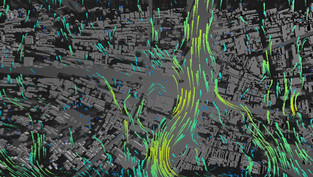Prasiolite State - Part 1 - Unstoppable Force
- Chokoon
- May 18, 2019
- 2 min read
Updated: Apr 26, 2022
Project Title: Prasiolite State
Condition: Academic
Date: 05/2017
/ Prasiolite State, or the "Green Crystals of Bangkok" is a computational and ecological architecture project done by Chulalongkorn university undergraduate Settawut Leenavong. The project has explored the characteristic of crystal formation, polygons, and various connections of molecular joints.
Prasiolite has been inspiration from the name of green crystals form inside the gas cavity of lavas. The exterior hard shell can protect the enclosed interior from the intervention of the physical environment; however, the intangible force heat is able to penetrate through the rock and create a reaction, which forms the magnificent colored crystals that are all unique across the crystal-bearing rocks.

The project aims to explore the environment readings in numbers to assist in finding the disparity in design experience, which may have an essential value on architectural procedure. In addition, to implement and utilize technology coherent to design and construction like capturing sensor value, integrating computer-aided design techniques, and using digital fabrication in manufacturing production. All of which assist one another to create a fresh and smart design system in modern Architecture.
The project begins by capturing data values in the site analysis. The intangible numeric readings were collected through different sensor types by the Arduino hardware such as the MQ-7 and AM2302 to capture carbon monoxide (CO) emission and humidity levels. The data was transferred into a spreadsheet and 3D software, compiled and analyzed for further design process.
Site wind flow analysis; Intensity and directions by altitude

The intensive force analysis on the site plan shows carbon monoxide intensity, ambient noises, heat radiation, temperature, humidity level, and wind intensity in the Sathorn region of Bangkok, situating among the most extreme bottleneck part of the city.
The analysis of the gathered data has allowed us to pinpoint the part of the city that has a high carbon monoxide exposure risk. It has also differentiated wind flow and ventilation levels, which may coincide with the density of trapped gases. Besides, the readings have revealed the disturbance of ambient noises in certain regions that may cause overall negative disruption to the resident. /
Read Part 2:



































Commentaires